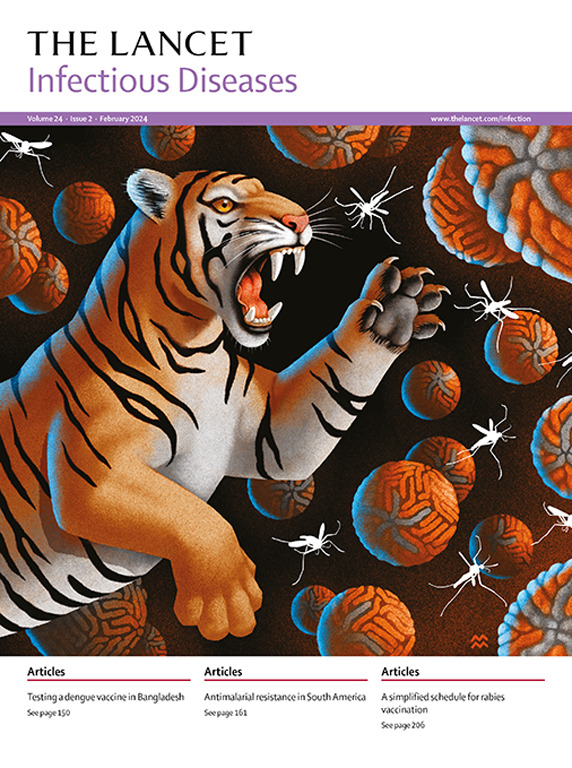Antimicrobials in serious illness and end-of-life care: lifting the veil of silence
IF 36.4
1区 医学
Q1 INFECTIOUS DISEASES
引用次数: 0
Abstract
Global rates of antimicrobial consumption increased by 65% between 2000 and 2015, by 16% between 2016 and 2023, and are estimated to increase by an additional 52% by 2030. Antimicrobial use and misuse remains high among people with serious illness and at end of life, despite scarce evidence of benefit. In addition, the overuse and misuse of antimicrobials at end of life further exacerbate antimicrobial resistance, which is a substantial public and global health concern. This Personal View synthesises global interprofessional and multidisciplinary perspectives on antimicrobial use, stewardship, and resistance at end of life and implications at patient and population levels. Guidelines have been summarised from multiple countries, some of which offer guidance for antimicrobial use at end of life. Countries at different income levels are included (ie, Chile, Colombia, Germany, India, Malaysia, Nigeria, Rwanda, and Sudan) to show how practice norms and standards vary internationally. These examples are combined with a case of non-beneficial end-of-life antimicrobial use and clinical guidance for patient and family communication regarding antimicrobial treatment. This Personal View also provides recommendations to improve antimicrobial stewardship with the goal of engaging multidisciplinary stakeholders and decreasing inappropriate antimicrobial use at end of life.求助全文
约1分钟内获得全文
求助全文
来源期刊

Lancet Infectious Diseases
医学-传染病学
CiteScore
60.90
自引率
0.70%
发文量
1064
审稿时长
6-12 weeks
期刊介绍:
The Lancet Infectious Diseases was launched in August, 2001, and is a lively monthly journal of original research, review, opinion, and news covering international issues relevant to clinical infectious diseases specialists worldwide.The infectious diseases journal aims to be a world-leading publication, featuring original research that advocates change or sheds light on clinical practices related to infectious diseases. The journal prioritizes articles with the potential to impact clinical practice or influence perspectives. Content covers a wide range of topics, including anti-infective therapy and immunization, bacterial, viral, fungal, and parasitic infections, emerging infectious diseases, HIV/AIDS, malaria, tuberculosis, mycobacterial infections, infection control, infectious diseases epidemiology, neglected tropical diseases, and travel medicine. Informative reviews on any subject linked to infectious diseases and human health are also welcomed.
 求助内容:
求助内容: 应助结果提醒方式:
应助结果提醒方式:


